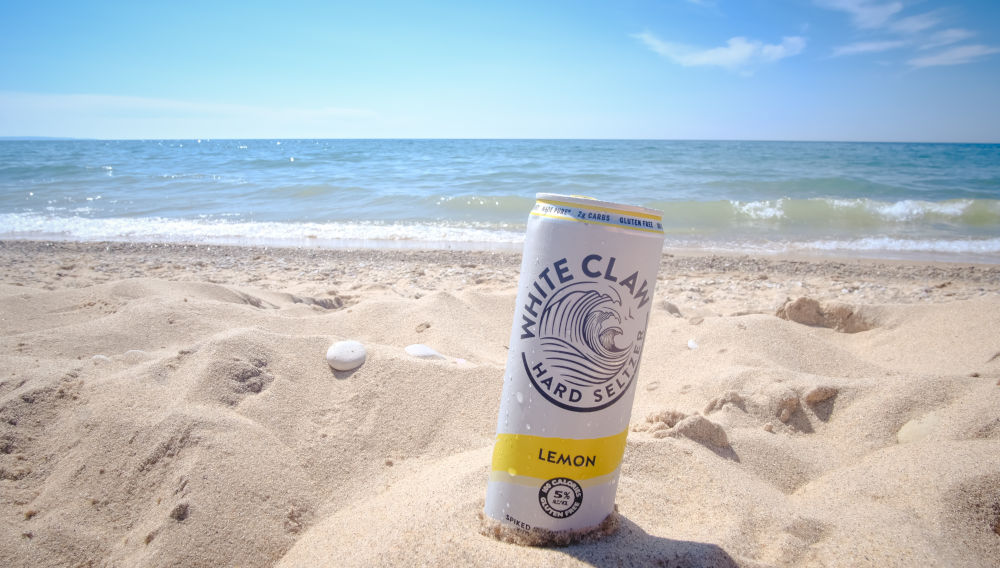White Claw’s owner: Hard seltzers could capture 30 percent of US beer
USA | Disruption may be such an overused term. But it perfectly describes what hard seltzers did to the US beer market. At the Beverage Forum, organised by the Beverage Marketing Corporation and conducted online in early May 2021, Anthony van Mandl, 71, the owner of Mark Anthony Brands and maker of White Claw, explained which trends boosted the category.
It appears somewhat cynical that a beverage, which was designed to capitalise on the tax benefits of beer, is modestly described as merely responding to a consumer need. But this is what Mr van Mandl said: “Today’s consumers care about their bodies. White Claw responded to a need and delivers against consumers’ needs.” That it would also disrupt the beer industry, massively and lastingly, no one could foretell.
Hard seltzers, which only hit the market five years ago, provide consumers who do not like beer, with something to drink at a beer occasion. Mr von Mandl has a point here. In 2000, 30 percent of all beer in the US was drunk by people aged 21 to 29 years, 21 being the legal drinking age. Twenty years later, this age group only accounted for 9 percent of beer consumption.
Flavours, please
One major trend according to Mr von Mandl is “flavour”. From snacks to yoghurt, various foods have moved to more flavour. US beer lagged this trend, even though it has done some catching up. Today, 35 percent of beer is flavourful, Mr von Mandl said, by which he means styles other than lager or pilsner.
However, the rise of hard seltzers was not flavour-driven. It was all to do with occasions, taste, and convenience. If Mr von Mandl’s forecasts become true, hard seltzers could capture 25 percent to 30 percent of US beer sales in the next four to five years, and up to 10 percent of the global drinks business by replacing cocktails like vodka+soda and gin+tonic.
At the moment, the category is entering into its “Gold Rush” era, Mr von Mandl explained. In May 2021, his firm counted about 200 competitor brands in the US, whereas 15 months ago, hard seltzers were a two-brand category, controlled by White Claw and Boston Beer’s Truly.
A two-horse race?
The category’s growth has somewhat slowed this year to slightly over 50 percent by May 2021, from 130 percent in 2020, when total sales reached 18 million hl. Still, he is convinced that, ultimately, the category will evolve akin to colas, energy drinks and sports drinks. From plenty of entrants only two brands will emerge as leaders, as was seen with Coke and Pepsi, Red Bull and Monster, as well as Gatorade and Powerade respectively. If this happens, Mr von Mandl predicted, there will be a clear-out and lots of financial pain.
You should not taste the booze
Mr von Mandl pointed out that taste is important, something he learnt from the wine industry. In his view, a hard seltzer is not supposed to taste like a vodka+soda cocktail. This is debatable. He is correct, though, that when drinking White Claw, you will not taste the alcohol, which he thinks is a marker of distinction. The same does not hold true for, say Coke’s Topo Chico hard seltzer, where you can taste the booze, he argued. Some critics would retort that this is a good thing because if you cannot notice the alcohol, you could mistakenly believe that you are drinking a non-alcoholic sparkling water with a dash of flavour.
Of equal importance are brand extensions. Adding new flavours will be vital for the future of the category, he said.
Obstacles to growth
He admitted to several threats to the industry: one is brand proliferation (aka the Gold Rush). The second is shelf space. However, Mr von Mandl is convinced that distributors and retailers will add more space for the category, if sales continue to rise.
Interestingly, Mr von Mandl also admitted to some mistakes he made. First, he announced the launch of Surge, an 8 percent ABV hard seltzer, 19 months ago, but had to delay the plan because of capacity constraints. This was the result of another mistake he made two years ago. He did not build any production plants when he should. Last year, he quickly opened two facilities, one in New Jersey and one in Arizona. A third one, in South Carolina, will come on-stream soon. It is noteworthy that he managed to finance these plants at a total cost of USD 1.2 billion from his own cash flow.
White Claw clearly made Mr von Mandl a fortune. In June 2021, Forbes estimated Mr von Mandl’s net worth at USD 8.7 billion.


